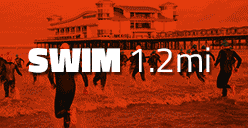In case you missed it see what’s in this section
Let's Talk

The football stadiums of Bristol
Sports have always formed an important part of the history and culture or Bristol, producing numerous famous personalities in a wide variety of sporting disciplines. Great sporting Bristolians include legendary cricketer W.G. Grace, along with Grand Slam tennis champion Jo Durie. In the modern day, exciting Formula One driver Lando Norris hails from our fair city, as does top snooker player Judd Trump.
Sports have always formed an important part of the history and culture or Bristol, producing numerous famous personalities in a wide variety of sporting disciplines. Great sporting Bristolians include legendary cricketer W.G. Grace, along with Grand Slam tennis champion Jo Durie. In the modern day, exciting Formula One driver Lando Norris hails from our fair city, as does top snooker player Judd Trump.
The people of Bristol are attracted to a wide array of sports and wagering has always been popular. High street bookmakers have evolved with time and technology, meaning we can choose from the best sports betting sites in the digital age, thanks to getting detailed reviews for the most reputable betting companies. Once comfortable with betting online, we can also get advice and betting tips, which help us wager with greater knowledge and responsibility.
One sport attracts more betting attention than any other, known as the ‘Beautiful Game’ by fans around the world, with football boasting billions of fans and followers around the world. Football has also been a keystone in Bristol sporting society, while the city actually boasts two famous and historic football clubs. Let’s take a look at their home venues, where thousands of loyal fans flock to support their favourite local teams.
Bristol City – Ashton Gate Stadium
For almost the entirety of their history as a football club, save for the first ten years after being founded in 1894, the home venue for Bristol City has been Ashton Gate. The football ground itself was actually opened in 1887 and was the home of Bedminster FC, before they merged with Bristol South End to form Bristol City Football Club, with the latter having previously played at St John’s Lane.
Since 1904 onwards the home of Bristol City has undergone much evolution, featuring numerous upgrades and improvements, although the club actually came close to leaving the venue entirely. Just over a decade ago, Bristol City found their attempts to build a new stadium particularly tortuous, according to BBC reports a few years later. Extensive plans for a new venue at Ashton Vale were ultimately opposed, then eventually abandoned.
Instead, the football club embarked upon an ambitious project to refurbish the Ashton Gate stadium, which resulted in the stylish and modern venue fans of the Robins enjoy today. The oldest part of the stadium is the Atyeo Stand, built in 1994 to replace open terracing and named after legendary former player, who played 645 games for Bristol City and represented England.
Meanwhile, the South Stand formed the start of the most recent major redevelopment, completed just after the 2014-15 season concluded. This was followed by the Dolman Stand over the summer of 2015, then the Landsdown Stand, which was completed in time for the 2016-17 season. Ashton Gate now boasts an impressive 27,000 capacity, accompanied by state-of-the-art facilities. The venue is also home to Premiership Rugby club Bristol bears.
Bristol Rovers – Memorial Stadium
Fans of Bristol Rovers probably have good reason to be more than a little envious, given the recent upgrades enjoyed by supporters of Bristol City. Despite being the older of the two clubs and founded in 1883, Bristol Rovers and their faithful following have experienced a somewhat nomadic experience, playing at no fewer than eight different venues throughout the club’s history.
During the first decade alone, Bristol Rovers called five different venues home. Purdown from 1883 to 1884, Three Acres from 1884 to 1891, Schoolmasters Cricket Ground from 1891 to 1892, Durdham Down from 1892 to 1897, then Ridgeway from 1894 to 1897. The club then eventually set down roots, when the iconic Eastville Stadium was completed in 1897, giving the Pirates a permanent home until eventually moving again 1986.
Unfortunately, pressing financial issues forced Bristol Rovers to vacate the Eastville Stadium, which meant that after 89 years at their home venue, the club was once again on the move. Much to the understandable frustration of the fans, watching home games involved travelling to Twerton Park in Bath, and while this was initially supposed to be a temporary arrangement, the club spent ten years ground sharing with Bath City.
Bristol Rovers finally moved back to their home city in 1996, becoming tenants of Bristol Rugby Club at the Memorial Stadium, before taking over ownership of the venue in 2005 and the rugby club moving to Ashton Gate in 2013. Ambitious plans to build a new stadium ultimately failed, therefore following a takeover by new owners in 2017, Bristol Rovers decided to stay and expand the Memorial Stadium, leading to the current 12,300 capacity.
What the future holds
Bristol City has undoubtedly converted their Ashton Gate home into a magnificent venue, which formed part of a wider development project in the surrounding area of the city. Meanwhile, given the complexities which surround plans for a new Bristol Rovers venue, the current owners appear to prefer investing in further upgrades at the Memorial Stadium
Weather in Bristol
Listings













